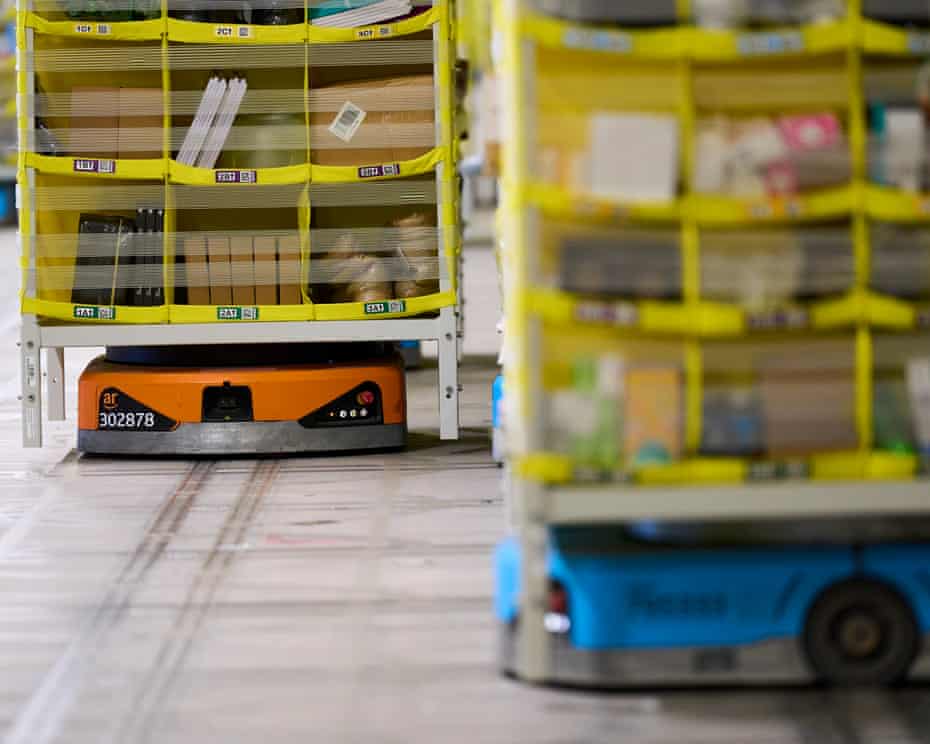Amazon has unveiled a groundbreaking advancement in warehouse automation with the launch of “Vulcan,” a new touch-sensitive robot designed to revolutionize how items are handled in its massive global distribution centers.
Debuting at the tech giant’s “Delivering the Future” event in Dortmund, Vulcan represents what Amazon describes as a “fundamental leap forward in robotics.” The robot can feel and identify items by touch, an ability long considered a hurdle in robotics, allowing it to safely pick up and sort about 75% of the diverse products in Amazon’s inventory.
Aaron Parness, Amazon’s director of robotics, hailed the innovation as transformative: “It’s not just seeing the world, it’s feeling it, enabling capabilities that were impossible for Amazon robots until now.”
Designed to Work Alongside Humans
Unlike its predecessors, which relied on suction cups and basic computer vision to move products, Vulcan uses artificial intelligence and tactile feedback to assess and grasp items of varying shapes and textures. It can store items in hard to reach places, such as the top and bottom tiers of mobile shelving units known as pods, reducing the need for workers to use ladders or bend repeatedly.
Vulcan is part of a growing suite of automation tools used by Amazon, which currently operates more than 750,000 robots across its warehouses. These machines, often working in tandem with humans, already transport shelving units to picking stations, where staff retrieve or stow goods.
Job Security Concerns Resurface
The rapid rise of warehouse robotics continues to spark concern over potential job losses. With many retailers, including Amazon, ramping up automation to offset rising global labor costs, industry watchers worry about long-term impacts on employment. Strikes over pay and working conditions have plagued Amazon facilities in the UK and other countries.
In 2023, Goldman Sachs economists projected that up to 300 million jobs could be lost worldwide by 2030 due to advances in generative AI and automation. Similarly, a report from the Tony Blair Institute warned that 60,000 to 275,000 UK jobs could be displaced annually at the peak of this disruption.
Yet, Amazon maintains that robots like Vulcan are meant to support not replace its human workforce.
“People Will Always Be Part of the Equation”
Tye Brady, Amazon’s chief technologist of robotics and a self-proclaimed “Star Wars geek,” likened Vulcan to a collaborative droid in a sci-fi saga.
“There’s no such thing as completely automated,” he said. “People will always be part of the equation. Robots are here to take on the menial, the mundane, and the repetitive tasks that wear people down.”
Brady added that human oversight remains critical in detecting system failures, cyber threats, and everyday mishaps such as damaged goods. “Machines may be able to flag anomalies, but people have the common sense and intuition to truly understand what’s happening.”
AI-Powered Packaging and Sustainability Push
Amazon is also rolling out machine-learning-powered packaging systems that customize boxes to reduce waste. More than 70 of these systems will be installed across the UK, Germany, France, Italy, and Spain by year-end, with more to follow through 2027.
The push for robotics comes alongside Amazon’s launch of a new low-cost shopping platform, Amazon Haul, in the UK, an aggressive move to take on ultra-budget e-commerce competitors like Shein and Temu. The site offers thousands of products for £20 or less.
As Brady put it, “It’s really exciting to bring both the mind and the body together. It’s finally here, and it’s just beginning.”



